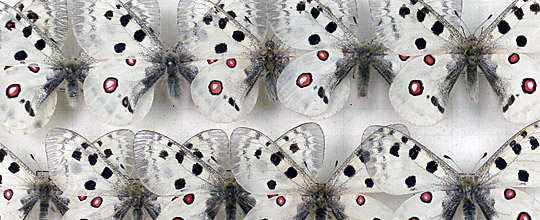Painted shoulder blade of a Bowhead Whale
The lower jaw and shoulder blade of a Bowhead Whale (Balaena mysticetus) from the mid 17th century rank among the oldest and most important objects in the collections of the Phyletisches Museum. The pieces were taken from the »Herzogliche Naturalien- und Kunstkammer Weimar« into the »Naturaliensammlung« of the palace in Jena in 1782.
Johann Wolfgang von Goethe 1820:
“We possess...a cervical vertebrate bone of a whale, grown together
into a blunt column, and also shoulder blades of the monster, painted
with ships, to emphasize the wondrousness of this broad area of bone.
Furthermore, two ribs and a sub-maxilla of the giant head can be
seen...”
The shoulder blade is one of only three known painted specimens dating from the 17th century. Following its restoration in June 1996, the images are now easily recognizable again, and the writing is legible.
The painting dates from February 1646. Below the date a medallion bearing the emblem of a stork can be made out. This was possibly the mark of a trading company, used to brand its property, or a city crest. The lettering on the edge of the shoulder blade is Old Dutch. Translated into English it reads: “Thanks to God's caring hand the whale is caught on the north side”, which probably refers to the arctic pack ice border.
The painting depicts realistic whaling scenes. Bowhead Whales began to be hunted intensively near Svalbard (Norway) as early as 1611. The whalers were accompanied by warships (galleons) carrying canons – note the old red and white Dutch flag waving on every mast. In the rowing boats, the harpooners are depicted in traditional clothing. The foreground shows silhouettes of floating whales, two of the animals shooting out streams of exhaled air.



